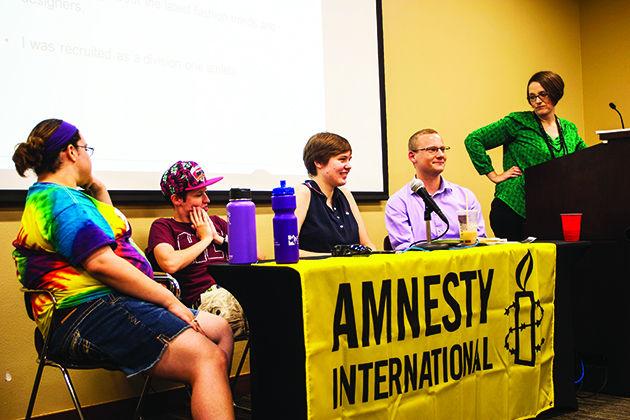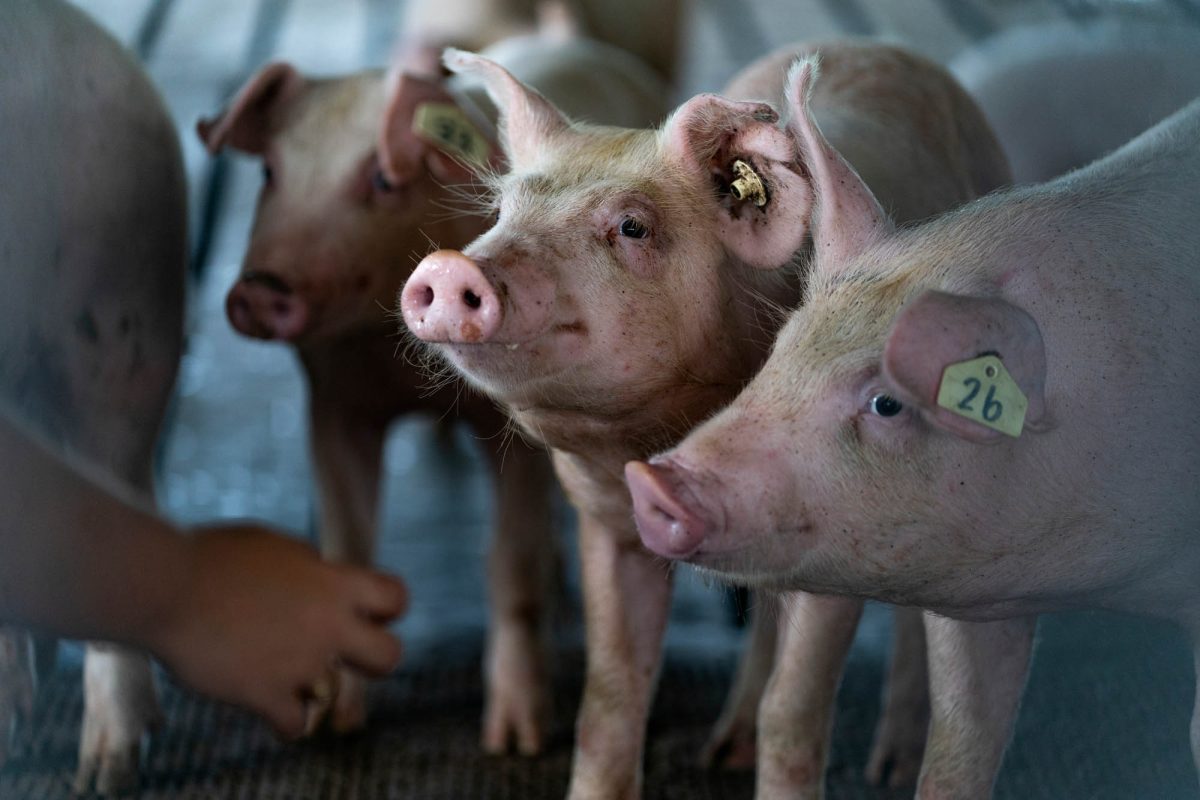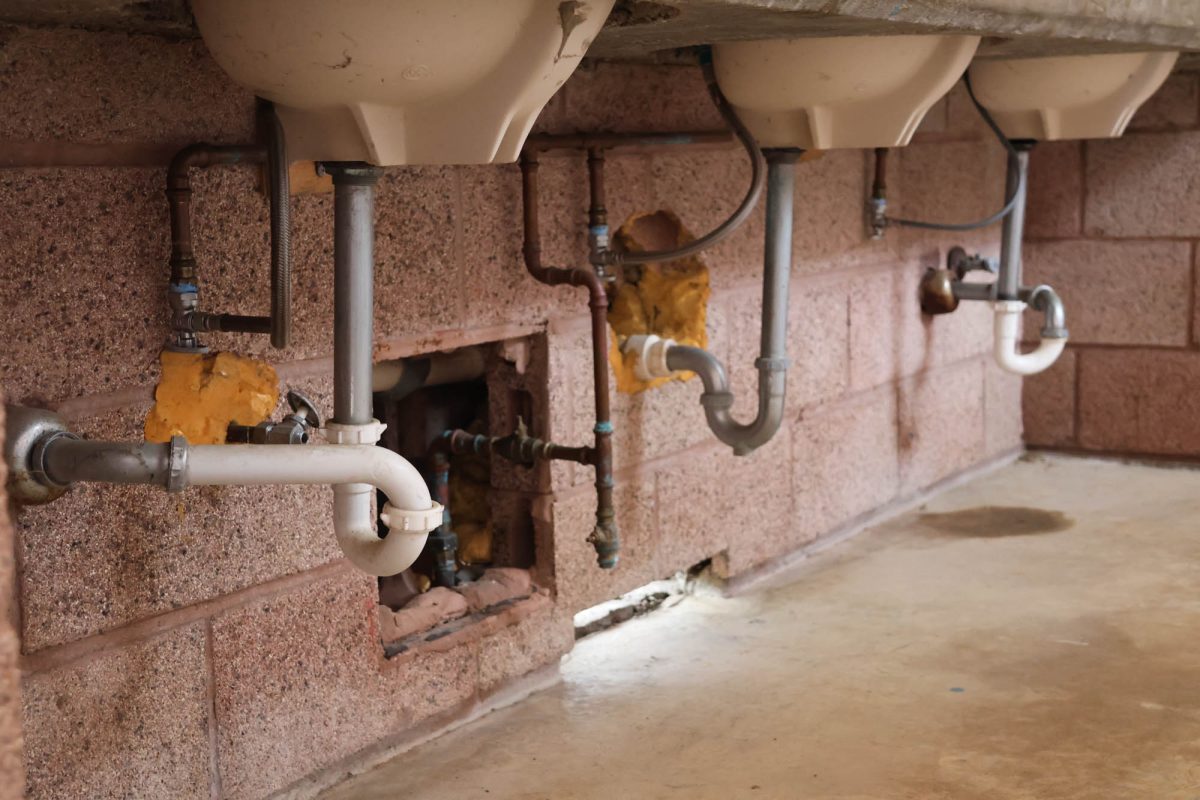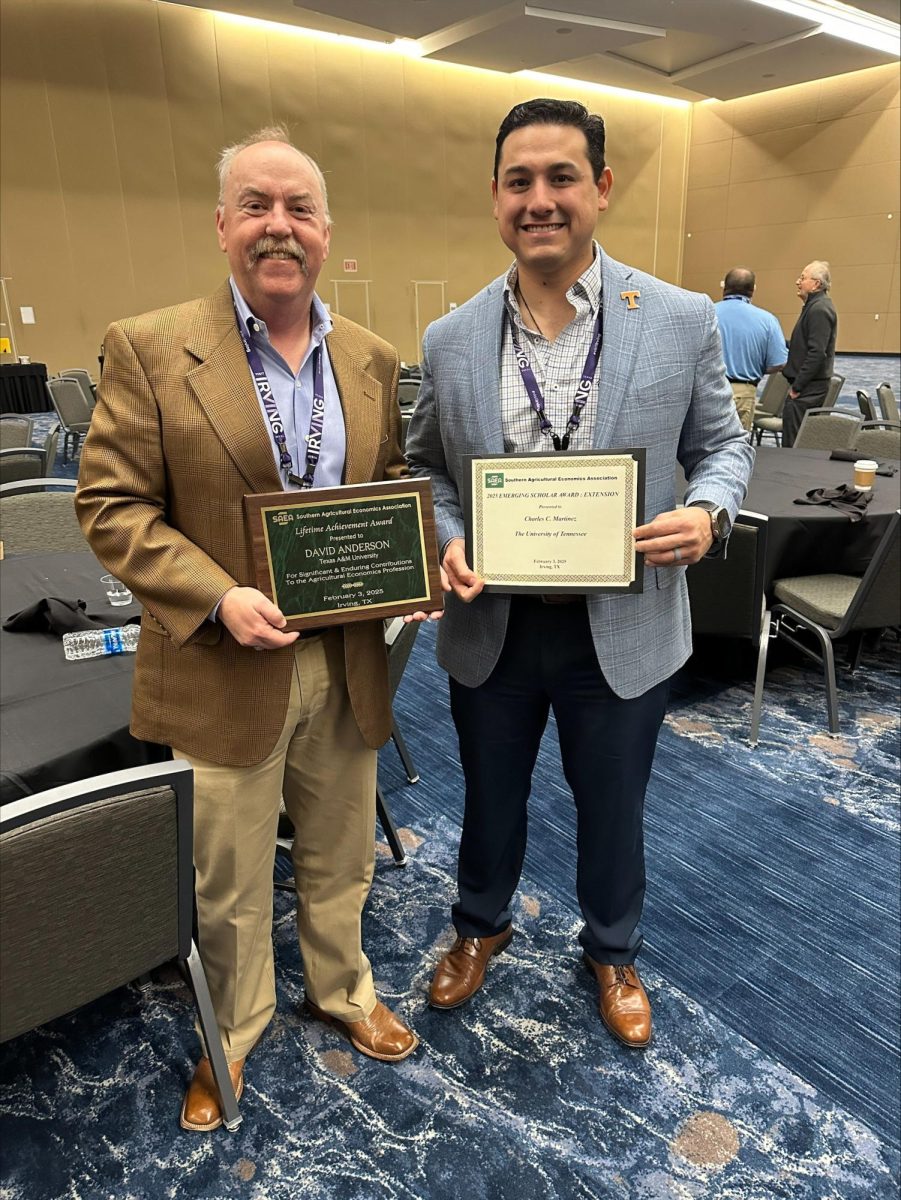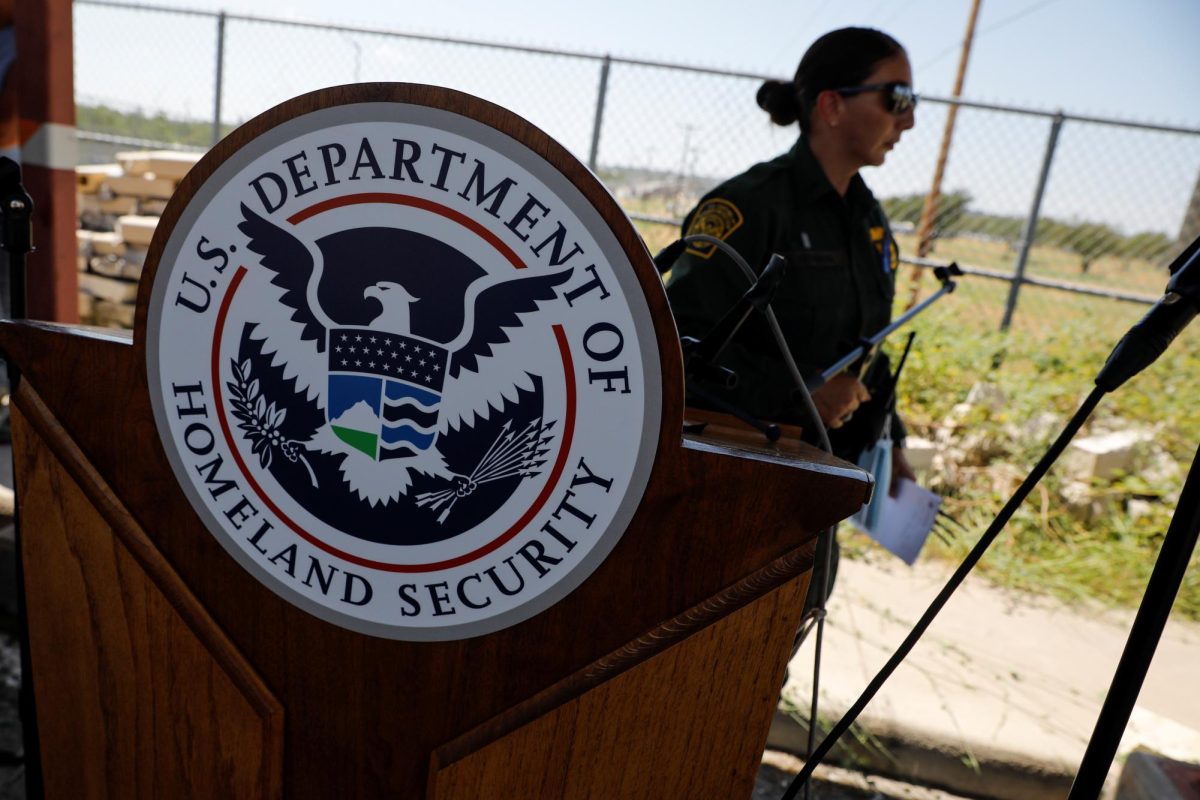Alongside pizza and drinks, a panel of four Lesbian, Gay, Bisexual and Transgender students discussed their personal experiences and fielded questions from curious audience members Wednesday night.
Hosted by the Texas A&M chapter of Amnesty International, the GLBT Resource Center was invited to bring a panel of LGBT students to speak about their lives on the Texas A&M campus.
“As you might be aware, Texas A&M is pretty consistently ranked among the least GLBT friendly universities in the nation and thus in the world,” said Stephen Berg, international studies sophomore and programs coordinator for TAMU Amnesty International. “So we wanted to host an environment in which people could just hear about the experiences of the students and where they could ask them in a safe space any questions they may have about their lives.”
The purpose of the panel was to give audience members a case study into the lives of LGBT community members.
“It’s not to be taken as a generalization for everybody, just to kind of expand what you know about the experiences of different identities,” Hulburt said.
The event consisted of two parts, the first being a program called “Two Truths and a Stereotype.” The program included three facts about each of the panelists, two true and one untrue stereotype. The audience members then had the chance to ask the panelists questions to figure out which of the facts were true and which was the stereotype.
“This is a fun exercise that we use to help point out some stereotypes that we have and that exist around the community,” said Sidney Gardner, program coordinator at the GLBT Resource Center. “Of course people will automatically assume that, of course, if you’re LGBT you must love Macklemore because he’s singing songs about the community and obviously that’s not the case.”
The second part of the event allowed members of the audience to ask the panelists questions about their personal experiences.
When asked about what it was like to be a member of the LGBT community at Texas A&M, the panelists answers varied. Due to the sensitive nature of the responses, each of the panelists will remain anonymous.
In response to A&M’s ranking as one of the least LGBT friendly campuses, one panelist said it does not matter where you are, there will always be pockets of hate.
“I think there are some parts of campus where that ranking is earned, however I also think on any campus you go to there will be parts of that ranking that are earned,” the panelist said. “I’ve been to some very liberal campuses. One of the most atrocious things I’ve ever been called was on UT’s campus — traditionally ranked one of the best LGBT friendly campuses in the world.”
Another panelist said while she’s never been attacked on campus, she has felt hate indirectly.
“The only thing that I think we can agree on is when the Student Senate tried to defund the GLBT resource center two years ago — that was pretty towards [feeling] hatred, I guess,” the panelist said. “So that’s the only bad thing that I felt personally on campus.”
When asked how people can become better allies towards the LGBT community, one panelist said to stop by the GLBT Resource Center.
“Coming to the resource center, which is just a place to hang out. It’s just a room and we have a TV and it’s a really quiet environment to study and things like that,” the panelist said. “Coming in there allows people who identify in the community, or even other allies, to see you and be like, ‘This person’s an ally; if I see them on campus I know that I can approach them.”
Corinne Morkovsky, English sophomore, said she was glad to have attended the event.
“I thought it was really eye opening, it was neat because it was like a really laid back environment,” Morkovsky said. “So it wasn’t really an interrogation it was more of like a — like I’ve never really just sat down and talked to somebody in that way before, in so casual a setting.”




